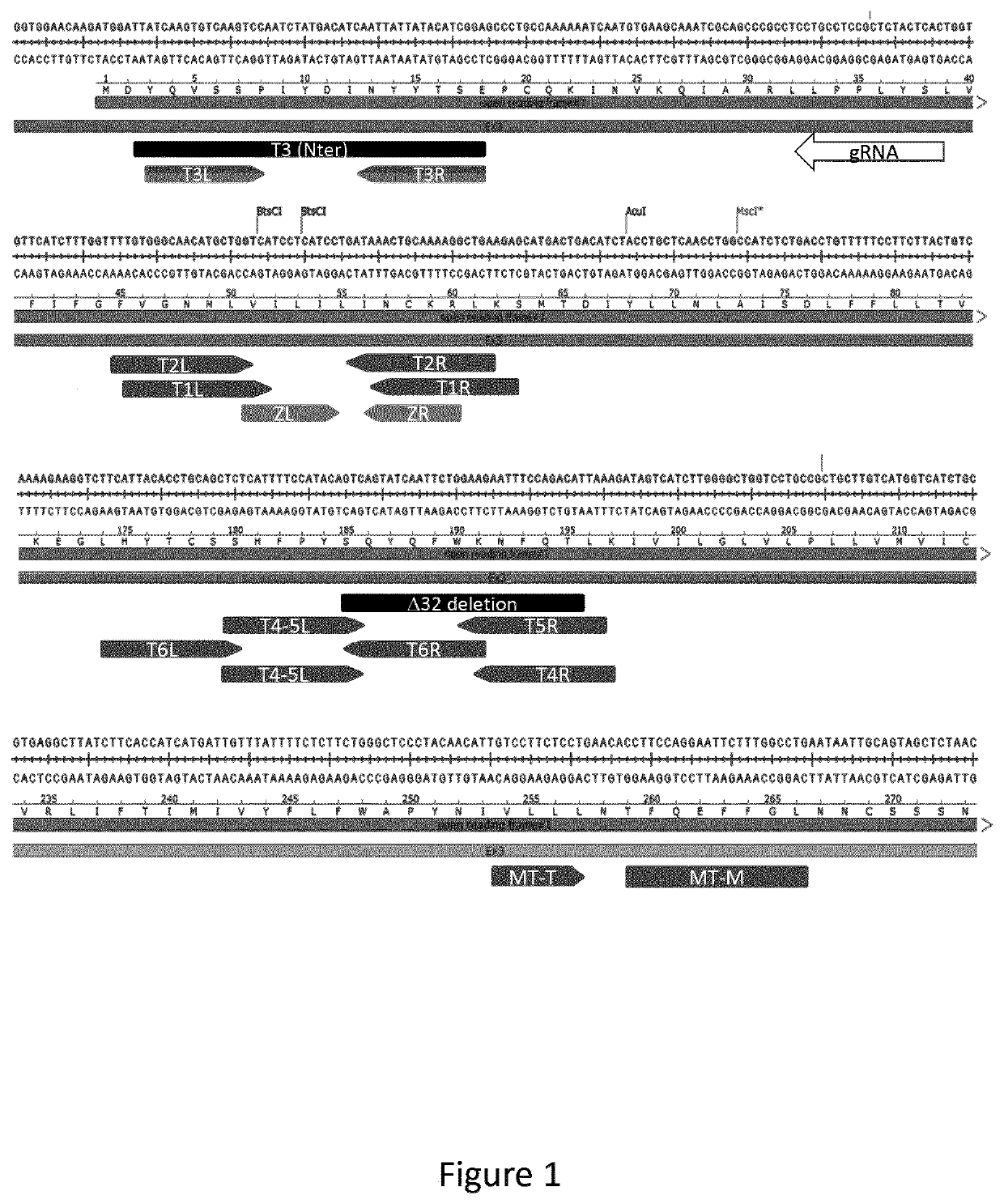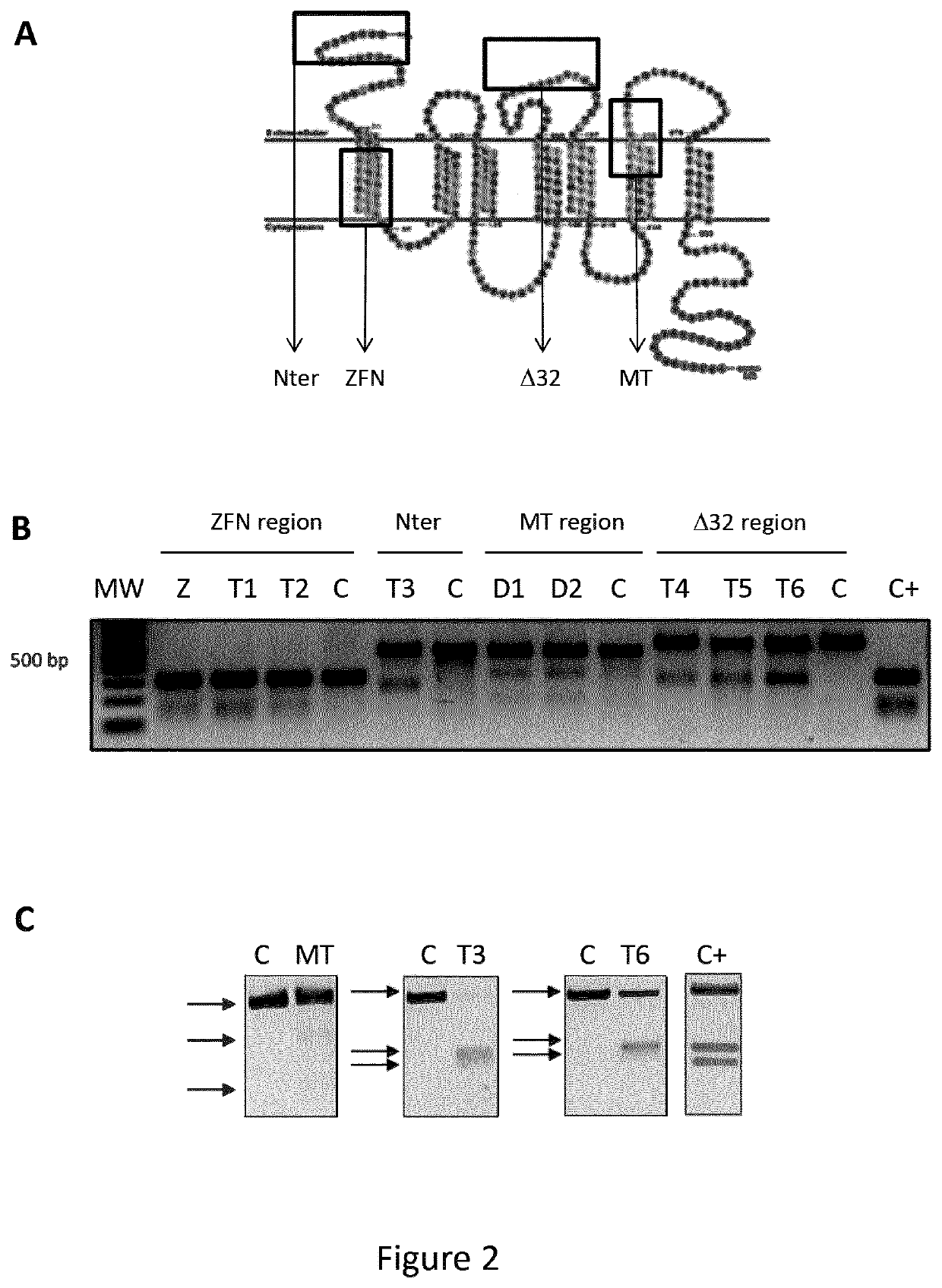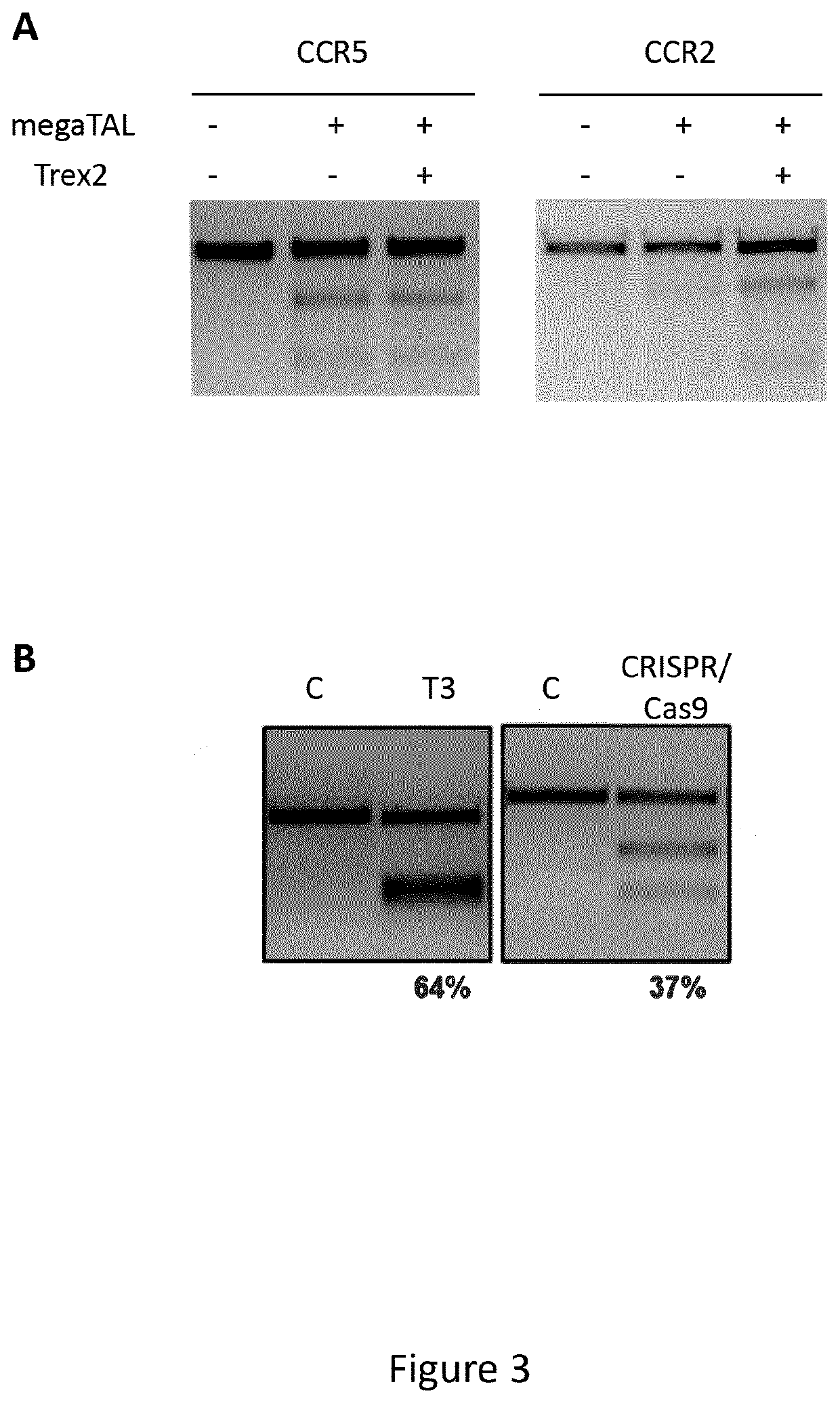New sequence specific reagents targeting ccr5 in primary hematopoietic cells
a technology of hematopoietic cells and reagents, applied in the field of gene therapy, can solve the problems that the efficiency and specificity of sequence specific reagents in the art have not shown enough to meet clinical needs, and achieve the effect of improving the efficiency of homologous recombination
- Summary
- Abstract
- Description
- Claims
- Application Information
AI Technical Summary
Benefits of technology
Problems solved by technology
Method used
Image
Examples
example 1
n of Site Specific Nuclease Targeting CCR5 Locus in Cell Lines
[0198]Six different TALEN® pairs (T), a ZFN pair (Z) and a MegaTAL nuclease (MT) were compared for their cleavage activity in human U2OS cells. Among the six TALEN pairs, one was designed to cleave the N-terminal region (SEQ ID NO. 2) of CCR5 gene (T3), two were designed to cleave at the target site of the ZFN used in the clinic (T1 and T2), three were designed to cleave close to the delta32 (CCR5Δ32) mutation (T4 to T6, respectively). The MegaTAL cleaves downstream of the 432 encoding region. The ZFN pair is replicating the ZFN used in the clinic. Their localization on CCR5 sequence is presented in FIGS. 1 and 2A.
[0199]TALEN® is a trademark owned by the applicant (Cellectis SA, 8 rue de la Croix Jarry, 75013 PARIS) to designate heterodimeric TALE-nucleases of commercial grade using the nuclease domain of Fok-I. 450 ng of plasmid encoding left or right unit of the TALEN T1 (SEQ ID NO. 18 and SEQ ID NO. 20), T2 (SEQ ID NO....
example 2
ific Nucleases Evaluation in Primary CD4+ T-Cells
[0202]Primary CD4+ T-cells were used to further evaluate nuclease activity of different site-specific nucleases targeting CCR5 locus. Primary CD4+ T-cells were isolated from healthy donors using magnetic beads (Miltenyi) and cultured in serum free X-Vivo15 (Lonza). CD4+ T cells were electroporated using the Agile Pulse MAX™ (BTX, Harvard apparatus) as described in Poirot et al. [Multiplex Genome-Edited T-cell Manufacturing Platform for “Off-the-Shelf” Adoptive T-cell Immunotherapies. Cancer Res. (2015) 75(18):3853-64]. The cells were cultured at a temperature of about 32° C. for 24 hours post electroporation, and then cultivated at 37° C. during 3 days.
[0203]It has been shown that Trex2 could increase the cleavage activity due to its 3′ to 5′ exonuclease activity (as described in WO2012058458). This exonuclease is well suited to increase, mutation rate induced by nuclease generating 3′ overhangs, such as I-Onul (as described in WO2014...
example 3
Specific Nucleases in Hematopoietic Stem and Progenitor Cells (HSPC)
[0209]First best conditions to achieve high disruptions in CD34+ cells by nucleofection of TALEN® mRNAs into the cells were established. HSPC cells were pre-cultured for 2 days in serum free CellGro Media (CellGenix, Germany) supplemented with 60 ng / mL FLt3, 20 ng / mL TPO and 60 ng / mL SCF (ImmunoTools, Germany) and afterwards 100,000 cells were nucleofected with the P3 Kit (Lonza, Switzerland). A titration nucleofection with an increasing amount from 1+1 μg to 4+4 μg of T3 TALEN® mRNAs in CD34+ cells was performed. The T7 Endonuclease1 assay demonstrates that the disruption increases concomitantly with increasing amounts of delivered mRNA (FIG. 4A, left panel). An optimum was reached when 3 μg of each TALEN® mRNA unit were co-delivered into CD34+ cells allowing 96% of KO efficiency (FIG. 4A, right panel). The same strategy was applied to identify optimal dose of megaTAL, T6 TALEN® (targeting the Δ32 region) or CRISPR...
PUM
| Property | Measurement | Unit |
|---|---|---|
| electric field | aaaaa | aaaaa |
| electric field | aaaaa | aaaaa |
| temperature | aaaaa | aaaaa |
Abstract
Description
Claims
Application Information
 Login to View More
Login to View More - R&D
- Intellectual Property
- Life Sciences
- Materials
- Tech Scout
- Unparalleled Data Quality
- Higher Quality Content
- 60% Fewer Hallucinations
Browse by: Latest US Patents, China's latest patents, Technical Efficacy Thesaurus, Application Domain, Technology Topic, Popular Technical Reports.
© 2025 PatSnap. All rights reserved.Legal|Privacy policy|Modern Slavery Act Transparency Statement|Sitemap|About US| Contact US: help@patsnap.com



